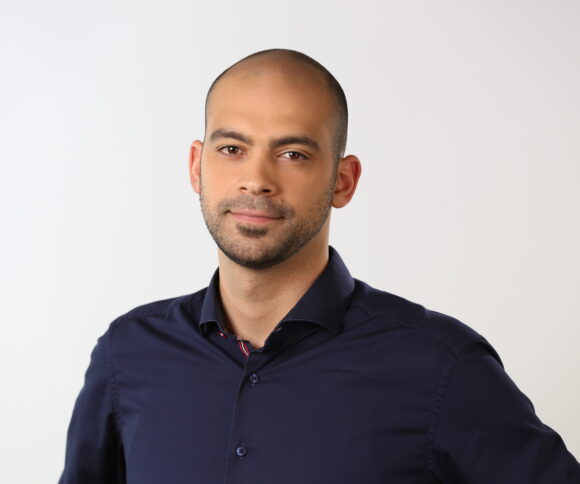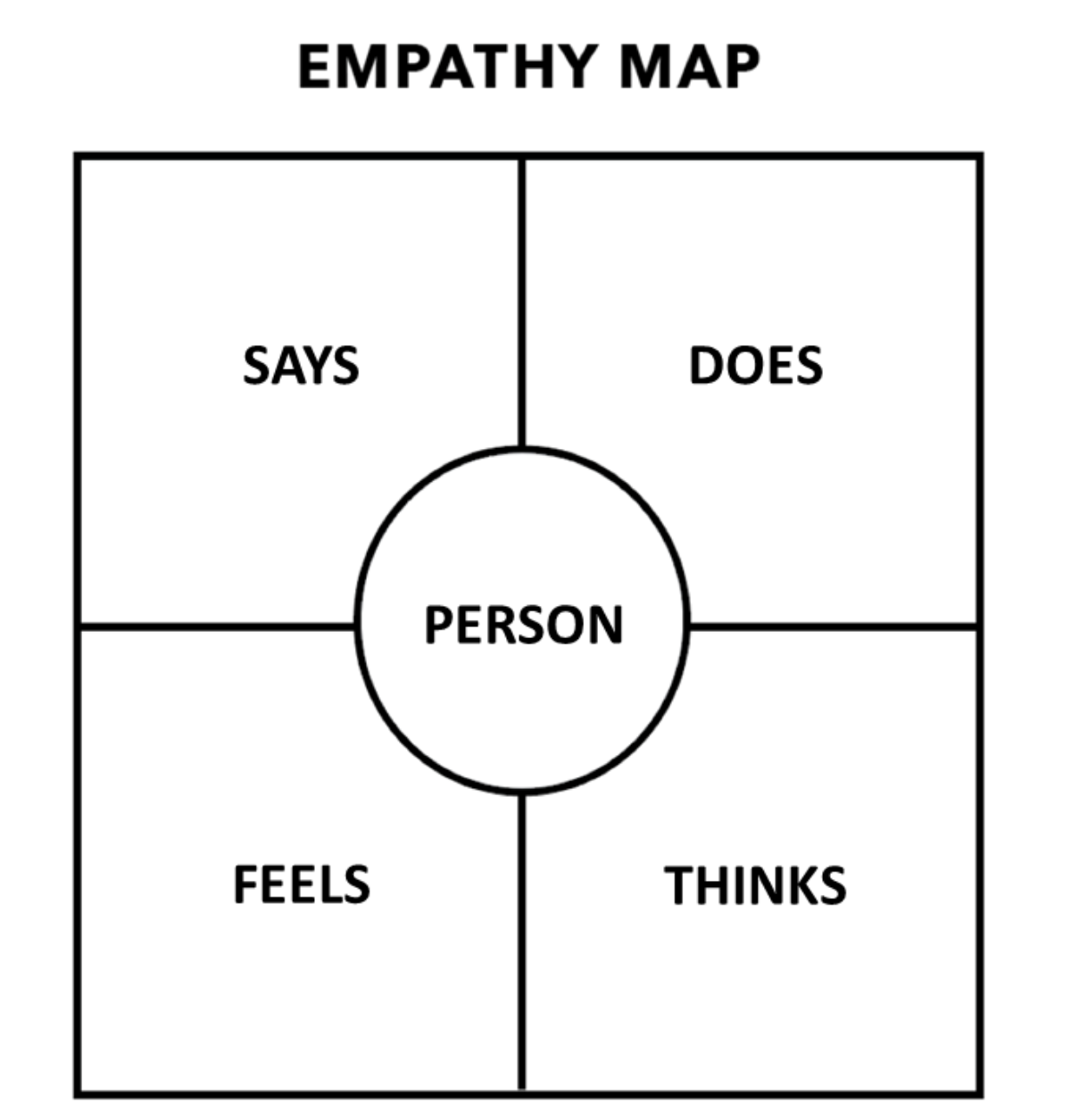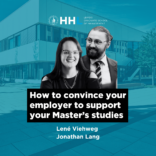
Interview with New Leipzig Talents Coach Ron Gabay
Design For Well-being
Ron Gabay is the Head of Innovation and Venture Design at Joy Ventures in Tel Aviv – a VC that invests and builds companies in the well-being domain. He is also a coach in the New Leipzig Talents program. In this interview, he talks about his coaching approach and how he integrates design into his work.
Ron studied at Humber College in Toronto and is an HHL MBA alumnus. In 2016 he was one of the first students to participate in the NLT coaching program. Last summer, he was invited to join as a coach and was happy to share his valuable experiences with HHL students.
In your master thesis, you tried to bridge different thinking styles in business and design. To me, your work was quite a contribution and it was published soon after you graduated. Tell me a bit about it.
I explored the different, yet complementary approaches and thinking styles of business and design. By investigating various theories and innovation practices, I tried to capture the importance of cognitive flexibility as a prerequisite for innovation. This cognitive flexibility is not trivial because both business and design have their unique and proven puzzle-solving powers. The main challenge is: how do we not over-specialize and crystallizes our perspectives, i. e. becoming rigid or even dogmatic, so that they are no longer flexible.
Can you give an example from your work to describe what you mean?
Working in a VC environment and leading venture creation activities constantly requires applying and balancing different perspectives. This is even more apparent when considering Joy Venture whose focus is wellbeing. On the one hand, from an investment perspective we seek to evaluate (to the extent possible) potential for growth through aspects such as revenues, costs, market size, willingness to pay and other quantifiable aspects. This is done as a mechanism to evaluate and reduce risk as much as possible.
On the other hand, creating new ventures and innovating requires embracing uncertainty, experimenting and connecting new information. Moreover, since we wish to build and invest in companies that improve people’s wellbeing, we must consider human aspects such as personality types, desires, motivations as well as cultural and social differences. These aspects are vital to understanding how to improve one’s wellbeing even though they are difficult (and sometimes even impossible) to quantify.
Balancing between making informed investment decisions while trying to build successful companies in the wellbeing domain, is where the flexibility and complementary powers of business and design guide me.
The New Leipzig Talents (NLT) coaching program, supported by BMW Leipzig and Dr. Arend Oetker, offers access to high-profile coaches in the form of an extra-curricular program. NLT is initiated and guided by the Chair of Business Psychology and Leadership in cooperation with the HHL Career Development department. Up to 25 first-year students can be admitted per year.
Each NLT participant is paired with an experienced coach for over six months and will also attend additional group workshops. Throughout the coaching, the Leipzig Leadership Model acts as a road map, helping the participants identify dimensions of good leadership.
How to apply to the program
The New Leipzig Talents program runs over a period of six months and starts in spring and autumn. The program is aimed at all first-year students of full-time and part-time Master in Management and MBA programs.
A limited number of students will be selected to participate in the New Leipzig Talents program over a six-month period. Interested students can apply online with a letter of motivation and a subsequent short selection interview.
The notion of a balance is of course attractive. However, we all are caught in our cognitive frames, sometimes even cages, which both help and hinder us. In your master thesis you applied the famous hedgehog-fox-metaphor by Archilochos: a hedgehog (trying to crystallize towards the big, one truth) and fox (accepting a variety of little, even competing truths) as two styles of looking at the world. How can we develop ourselves to harness the strength of each cognitive style?
I believe that the hedgehog and the fox metaphor can help us recognize and better understand our cognitive tendencies. Could this understanding help us harness the strength of each style? It is definitely a starting point. For me, being exposed to different and opposing cognitive styles is key (this is also true for my MBA experience). It helps me not only to understand different people, but it also leads me to reflect and understand better my own thinking style, approach and potential blind spots.
How does all this translate into your coaching approach? Assuming you try and facilitate self-reflection towards better self-understanding, what is your way of triggering it?
This might all sound very philosophical, but it is important to translate this into a practical coaching experience. For example, together with the coachees we use a tool from the design toolbox that is called empathy map. The map seeks to capture what a person does, says, thinks and feels. When we reflect on a specific situation that we have experienced and capture these four aspects, interesting discussions emerge.
Exploring our inner world requires vulnerability, courage, and the acknowledgment that this is an ongoing journey towards finding our purpose and living a meaningful life.
Often there are discrepancies between what we do above the surface (our words and actions) and underneath the surface (thoughts and feelings). When these discrepancies are made visible through the map, we can start to investigate what are the factors that make us express ourselves in a manner that is not aligned with what we feel or think. While I believe that it is important that we strive towards internal and external alignment, it is also important to recognize that our reality is complex, and this might not always be possible.
The Empathy Map for Students

Another concept I see important in your work is vulnerability, i.e. the ability to expose oneself to get hurt. Most people would do a lot to avoid pain and loss. Why is it important to touch such an existential dimension in coaching?
The empathy map highlights this very notion of vulnerability. The map can become a self-improving tool or a compass only if we are sensitive and true to ourselves. We need to be able to do two things. First, recognize and admit that what we say or do externally might not be aligned with our internal world. Second, be willing to explore this inner world. This is not easy and can lead to existential questions about our identity and values. This requires vulnerability, courage, and the acknowledgment that this is an ongoing journey towards finding our purpose and living a meaningful life.
Along those lines, I came to appreciate that one can only evolve along with one’s own contradictions, due to lacking alignment, failure and disappointment. If it is a journey as you say, what is the role of a coach in keeping the journey going?
I believe that the role of the coach is not to keep the journey going – the journey is owned and driven forward by the Coachee. The coach is responsible to reflect to the coachee how this journey looks from the outside, challenge certain aspects of the journey and allow for a healthy and fruitful exchange of thoughts and perspectives. Together, these factors can help the coachee to design his or her unique journey.
When I reflect on experiences that have helped me grow and shaped who I am as a person, I feel it was when the internal and external forces collided and spark a new reality.
One last question: If it is true that we all live in a balance of push and pull, what is it you draw your own “travel energy” from?
I can think of many things that fuel my travel energy. Some of them are based on internal motivations and some on external forces. When I reflect on experiences that have helped me grow and shaped who I am as a person, I feel it was when the internal and external forces collided and spark a new reality. This is the reason why C.P. Snow’s writing resonates so deeply with me:
“The clashing point of two subjects, two disciplines, two cultures—of two galaxies, so far as that goes—ought to produce creative chances. In the history of mental activity, that has been where some of the breakthroughs came” – C.P. Snow The Two Cultures
This interview was conducted by Professor Meynhardt and Psychologist Martina Beerman (Career development).

Manager New Leipzig Talents


